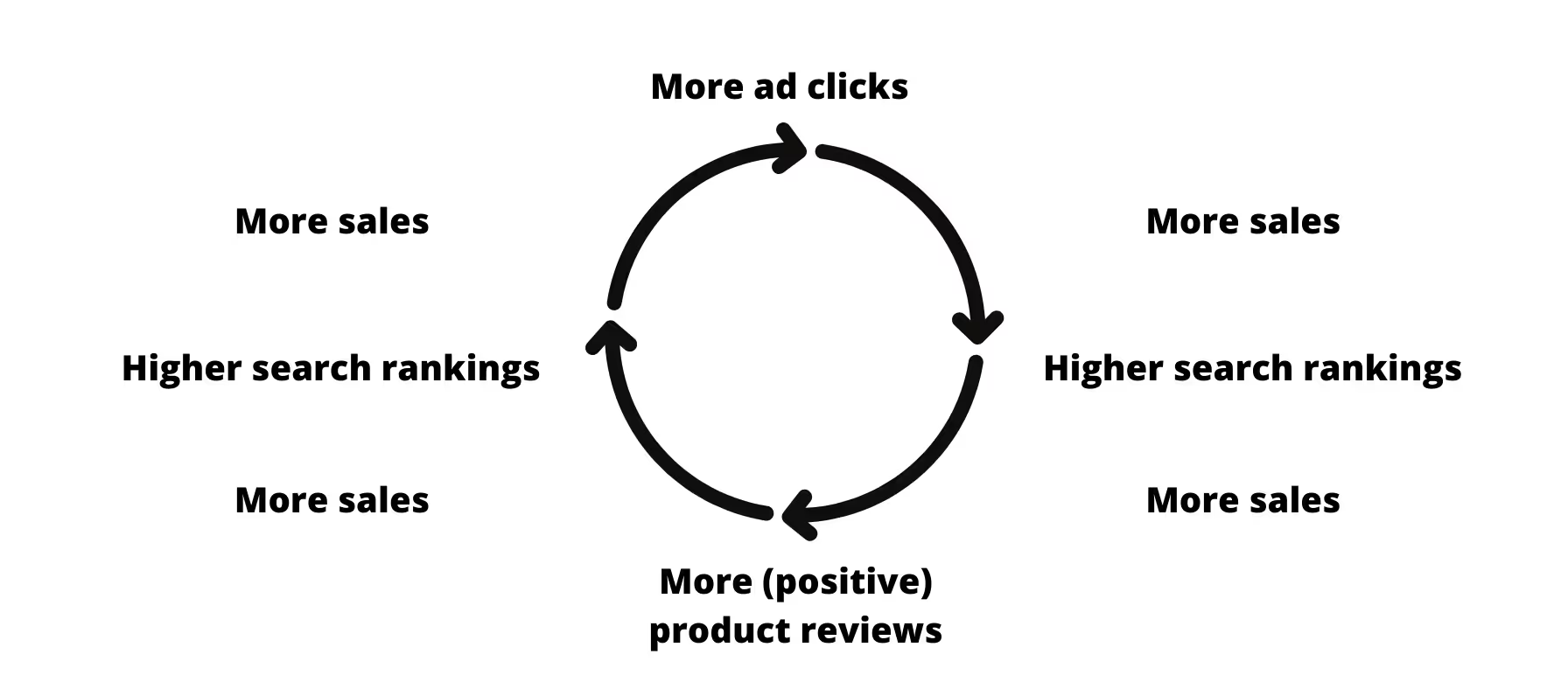
Conversation

🥳 Feedback Received!
Thanks for taking a moment to share your thoughts — it genuinely helps us make each chapter sharper.
What happens next:
- Your feedback goes straight to our product team.
- We’ll use it to refine lessons, clarify examples, and make the program even more useful.
Appreciate you helping make this program better for everyone.
Ready for your next challenge? 👇
Introduction: Amazon Ads
This unit was co-created with Ad Badger. We’ll show you how to execute Amazon ads yourself. If after going through this course, you’re looking for a partner, Ad Badger is it.
In this module, we’ll go through the why, who, what, and how of Amazon ads.
- Why: We’ll explain the benefits of advertising on Amazon.
- Who: Find out if your business would be a good fit for Amazon ads.
- What: We’ll go over the main ad types on Amazon.
- How: Most of this module will be about how to launch, track, and optimize your first campaigns.
Overview
There are two important things to know off the bat about Amazon ads:
- They have the highest conversion rate for paid search traffic. Amazon advertisers can consistently get around a 10% conversion rate. Compare that to Google Shopping ads, for instance, which have an average conversion rate below 2%.
- The Covid-19 pandemic accelerated the shift to ecommerce. Amazon’s profits soared—and so did their ad rates. Even so, you can still get a high ROI from Amazon ads if you research, bid, and scale smartly. We’ll show you how.
Amazon ads can be highly effective—but only if you’re strategic.
Why advertise on Amazon
Like Google and Facebook, Amazon ads are PPC (pay-per-click). Amazon shoppers see them when they conduct searches, visit product pages, and otherwise engage with Amazon.com. Amazon sellers pay whenever shoppers click on their ads.
But Amazon has something that Google and Facebook don’t: a high-intent user base. Someone browsing Facebook isn’t necessarily interested in buying something. If they see an ad for a bookshelf, chances are they’ll keep scrolling. That’s not the case for someone who types “bookshelf” into the Amazon search bar.
Amazon users are far along in the buyer journey. They’re ready to purchase.
Other benefits of Amazon as an acquisition channel:
- More sales. As mentioned above, it has the highest conversion rate for PPC traffic. For ecommerce products, that means more customers, sales, and revenue.
- Better brand recognition. You can use it to build brand awareness, increase your market share, and improve defensibility against competitors. If your knife set shows up when someone searches for “durable kitchen knives,” your name recognition will grow.
- Paid ads improve Amazon organic search rankings. PPC traffic has a direct relationship with organic search rankings on Amazon, and many advertisers see a lift in organic ranking for keywords they bid aggressively on. There’s a loop effect to that: more PPC clicks → more sales → higher organic rankings → more sales → more product reviews → more sales → higher organic rankings → more sales → higher ad conversion rate. That’s not the case for other search platforms like Google, where relationships between paid and organic rankings are indirect.

Some key criteria to consider when choosing an acquisition channel are scale, targeting, effort, time to results, and intent. Amazon scores high across the board. In addition to being high intent, it has:
- Large scale: There are millions of monthly active users on Amazon.
- Strong targeting: Amazon has keyword, product, and audience targeting. Each type gets granular—for instance, product targeting includes targeting by price, star rating, brand, and Prime eligibility.
- Low effort: Unless you’re running video ads, you won’t have much to do for ad creative.
- Low time to results: It takes just two clicks for a shopper to move from viewing an ad to adding to cart.
If your products are suited to it, Amazon can be a strong acquisition channel.
The products Amazon ads are best for
Amazon ads are best suited to ecommerce products with short sales cycles, recognizable benefits, and strong search traffic. New product types aren’t going to generate a lot of search traffic, so they won’t perform as well. Neither will products that require explanation, like a complicated piece of equipment.
Amazon ads work for both B2C and B2B. Really, any product that sells on Amazon can be advertised on Amazon.
Here are a few examples of products that convert well on Amazon ads.
The above examples are ecommerce, but non-ecommerce brands can advertise on Amazon too. We’ve seen Amazon ads for insurance, internet service providers, credit cards, and plenty of other businesses that aren’t selling products on Amazon.
But far and away, most sales on Amazon are ecommerce products, so that’s what we’ll focus on.


